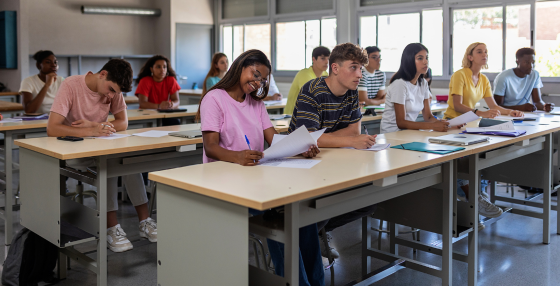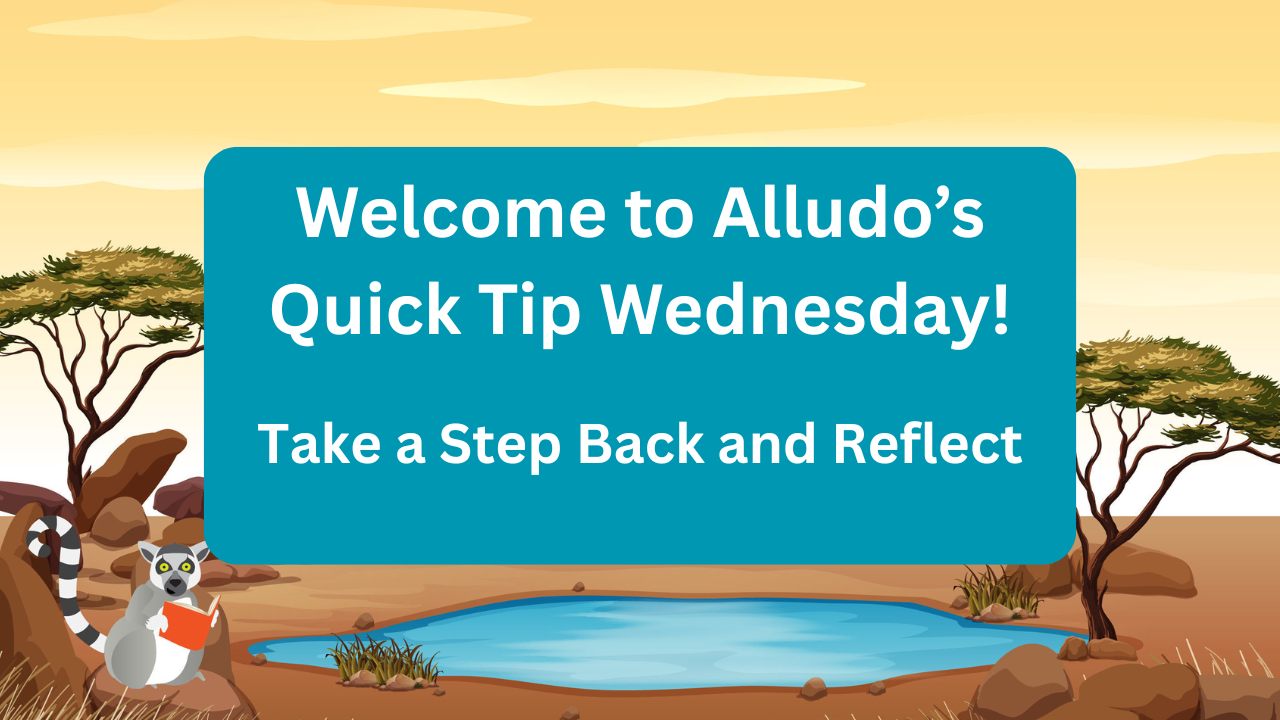Quick Tip Wednesday: How to Set Up a Gratitude Month
Welcome back to Quick Tip Wednesday!
6 min read
Rebecca Barron : May 3, 2025 2:00:00 AM

LINKS FOR YOU
💡Using the SAMR Model of Tech Integration in the Classroom - Explore what substitution, augmentation, modification, and redefinition mean in lesson design.
🧠 How educators can account for student anxiety during lessons - Integrate social-emotional tools into lessons to ease student stress.
🌿 Connecting Content With Nature in High School Lessons - See how strategic use of outdoor spaces can transform engagement and bring curriculum to life.
📊 Gen Z Is Growing Up in Education Upheaval. How Are Teens Doing? - Discover how today's youth face diverse challenges, from rising poverty to mental health issues.
🔄 Using Community Circles to Boost School Culture - Explore how regular large-group gatherings help students develop stronger relationships.
GRANTS FOR PD
🔑 Learning Communities for School Success Program: Cohort 9 - Boost attendance, reduce dropouts, and support at-risk students (CA)
📚 MA FY26 Partnership for Reading Success - MA PRISM III Gr 4-12 594 - Access funding to transform your grades 4-12 literacy instruction (MA)
🚀 FY26 IN Next Generation School Improvement Grant (NetGen SIG Cohort 5) - Transform your school with this 4-year grant, giving communities control over scheduling, staffing, budgeting, and curriculum (IN)
💻 Computer Science Professional Development Program 2025 - Secure funding for teacher training to launch new computer science courses in grades 9-12 (AZ)
🤝 2024-2027 Board Coaching and Development - Get governance support from ESC 20 to implement research-based practices and training for school boards (TX)
JOBS
🍎 Special Education Teacher - Join a supportive coastal community where you can make a difference in the lives of exceptional learners in Ocean Park ES (WA)
🗣️ Spanish-speaking Teacher Aide at Seashore Academy - Support bilingual learning in this vibrant Orange County educational community (CA)
🧮 HS Math Teacher, Honors and AP Level - Shape the mathematical minds of advanced students at Don Soffer Aventura High School (FL)
📚 Elementary Teacher - Inspire and educate elementary learners at Princeton Public Schools (NJ)
🔍 Instructional Coach - IB (2025-2026 School Year) - Elevate teaching practices in this highly-rated IB program position in San Antonio ISD (TX)
ONE BIG IDEA

Educators enter the profession with hopes of making a positive difference in students' lives.
They design lesson plans with care, establish classroom communities with purpose, and genuinely believe in each student's potential to succeed.
Yet despite these sincere intentions, national educational data consistently reveals troubling patterns: achievement gaps persist, disciplinary actions affect student groups disproportionately, and certain voices dominate classroom discourse while others remain peripheral.
These patterns aren't simply the result of individual teaching choices. They reflect a deeper reality about human cognition: the brain naturally creates shortcuts, categorizes information, and makes rapid judgments that operate below conscious awareness.
This implicit bias isn't a character flaw or moral failing. It's a universal feature of how minds work—one that evolved for efficiency but can undermine educational equity when left unexamined in the classroom.
The good news is that research in cognitive science and educational psychology has identified effective strategies for educators to recognize and interrupt these patterns.
By understanding how the mind naturally functions, teachers gain powerful tools to create truly inclusive learning environments where each student has genuine opportunity to thrive.

The assessment approaches and classroom dynamics that educators create often reflect perspectives and preferences they may not even realize they hold.
Research from the Kirwan Institute for the Study of Race and Ethnicity shows that implicit bias operates without awareness or intentional control, yet significantly impacts educational outcomes.
Unexamined bias emerges when educators:
Meanwhile, students internalize these subtle messages, which can affect their academic identity, engagement, and sense of belonging within the classroom community.
Expecting all students to thrive equally in environments that unconsciously favor specific ways of thinking, communicating, or demonstrating knowledge isn't only unrealistic but also inequitable.
These realities create complex challenges for both students and educators alike.
The science of cognitive psychology offers pathways toward more equitable learning spaces where every student can excel authentically.
Teachers have likely never counted exactly how many boys versus girls they call on during discussions, or tracked how often they engage with students in different seating areas of their classroom.
Yet research consistently shows that teachers tend to:
This participation pattern reveals confirmation bias at work: educators unconsciously seek to confirm their existing perceptions of student ability.
A practical approach: For one full class period, teachers can use a simple tally system to track which students they engage with and how. The patterns might surprise them.
When evaluating student work, educators bring their own cultural frameworks and preferences – often without realizing it.
Studies have found that teachers graded identical papers differently based solely on the perceived race of the student author.
This doesn't mean educators are deliberately unfair; rather, it highlights how unconscious expectations influence their judgment.
Educators can challenge this by:
National data consistently shows disparities in how classroom behavior is interpreted and addressed.
For identical behaviors:
These patterns often stem from affinity bias – the tendency to view behavior more positively in those who remind us of ourselves.
When educators scan their classroom materials, they should consider: Whose stories, contributions, and perspectives are centered? Whose are peripheral or missing entirely?
When students rarely see themselves reflected in the curriculum, they receive powerful implicit messages about whose knowledge matters.
Resources from Learning for Justice (formerly Teaching Tolerance) offer excellent guides for auditing and diversifying classroom materials.

Before redirecting behavior or responding to a student's contribution, teachers pause and ask themselves:
This brief mental interruption creates space to respond based on the situation rather than automatic patterns.
Implementation tip: Practice this reflection technique daily for one class period until it becomes a habit.
When designing lessons or selecting examples, teachers:
Implementation tip: Creating a simple checklist with questions like "Whose perspective is centered here?" and "Who might feel excluded by this example?" helps review materials before using them.
Teachers select one aspect of their teaching practice (participation patterns, praise distribution, response to questions) and collect objective data for a week by:
Then analyze: Are there patterns related to student identity, seating location, or personal relationships with different students?
Implementation tip: Many educational equity organizations offer free self-assessment tools that guide personal reflection processes.

Before attempting to address bias in the classroom, educators should invest time in understanding their own tendencies. Harvard's Implicit Association Test (available online) provides a starting point for identifying areas where hidden bias might be operating.
Teachers find 2-3 trusted colleagues willing to engage in honest conversations about bias. They review each other's materials, observe patterns in each other's classrooms, and provide feedback from different perspectives.
Educators move beyond good intentions to create concrete systems like:
Students often have valuable insights about classroom dynamics. Teachers create age-appropriate ways for them to provide feedback about whose voices dominate discussions, whose experiences are reflected in examples, and how included they feel in the learning community.

When stripped of academic terminology and professional development jargon, addressing bias in education represents something fundamental: a commitment to seeing and serving all students with genuine equity.
Those moments when educators pause before responding to a behavioral issue, or when they intentionally diversify the examples in a lesson, these small adjustments have a significant impact on student experience and achievement.
In the everyday hustle of teaching, it's easy to fall back on autopilot and miss the subtle ways bias shapes educational practice.
However, with awareness and deliberate strategies, teachers can foster environments where all students experience a sense of belonging, challenge, and authentic recognition of their potential.
As educators apply these insights in their teaching, they should remember that addressing bias isn't about achieving perfection.
It's about committing to an ongoing journey of awareness and adjustment, modeling for students exactly the kind of growth mindset teachers hope to instill in them.
What small step might you take this week to make your classroom a place where every student is truly seen?
Alludo - we have helped district leaders across the country increase capacity in thousands of schools by successfully delivering millions of evidence-based professional learning lessons to their educators and staff members.
See you next Saturday!
Rebecca
.png)
Welcome back to Quick Tip Wednesday!

Mid-Year Reflection: Your Secret to a Stronger Second Semester
A great way to get your learners engaged in your Alludo program is by keeping the content in your program up-to-date and relevant. Rebecca has...